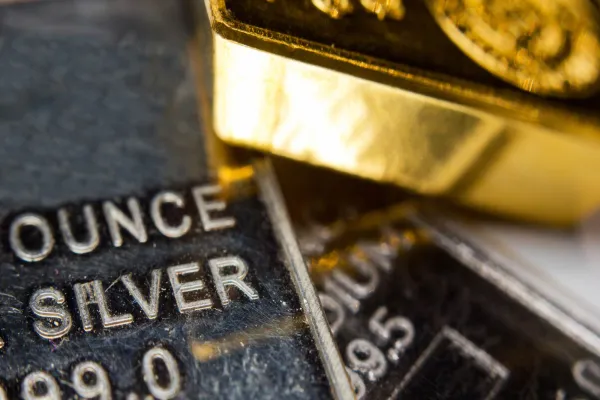With the Standard & Poor's 500 index down 28 percent as of mid-July, many portfolio managers with multicap mandates are steering clear of the big blue chips. But an intrepid group of stock pickers is finding good values in beaten-down names.
"Large-cap stocks are at the point where it makes sense to start making the bulk of new purchases there," says Tom Huber, manager of the $560 million T. Rowe Price Dividend Growth fund, a multicap portfolio that was down 24 percent through mid-July.
Although small-cap (market cap between $390 million and $1.4 billion, as defined by Morningstar) and midcap (market cap between $1.4 billion and $8.5 billion) stocks have offered handsome returns in recent years, their best days may well be behind them. The S&P SmallCap 600 index gained 11 percent in 2000 (versus a 10 percent loss for the S&P 500) and 6 percent in 2001 (versus an 11.9 percent loss for the large-cap benchmark); the S&P MidCap 400 index rose 16 percent in 2000 and fell 2.1 percent in 2001. This year through mid-July, the S&P SmallCap 600 and MidCap 400 had both dropped 19 percent.
"I still see a lot of blind money going into small and midcaps," says Scott Schermerhorn, senior portfolio manager of the Liberty Growth & Income Fund. "But you are chasing yesterday's performance."
Notes PanAgora Asset Management chief investment officer Edgar Peters, "This is not the time to contemplate shifting assets into mid- and small-cap stocks. It's too late." Large caps now represent 80 percent of PanAgora's $1.3 billion in institutional accounts, up from 50 percent a year ago, and Peters expects that overweighting to continue to climb over the next six to 12 months.
In returning to large caps, portfolio managers are moving cautiously, for the most part avoiding the technology icons of the late '90s bull market and shopping selectively among pharmaceuticals and telecommunications companies. Even so, the market's recent swoon has put most of their selections under water.
Still, these managers continue to accumulate shares in sectors that they feel have been oversold. In this camp big-name pharmaceuticals are attracting considerable interest.
The industry's ailments are clear, as companies confront a rash of patent expirations and a relative scarcity of potential new blockbuster drugs in their pipe-lines (Institutional Investor, June 2002). As a result, pharmaceuticals stocks were down 36 percent through mid-July, scraping a five-year low. Yet the group is now trading in the range of 13 times anticipated 2003 earnings, versus 15 for the S&P 500, prompting managers to make bets on what they believe to be well-managed companies with reasonably solid growth prospects.
T. Rowe Price's Huber initiated a position in Eli Lilly & Co. in April. He paid an average of $60 a share, and the stock now represents 0.6 percent of fund assets. He hopes the purchase was merely premature: The stock traded at $48 in mid-July. Investors are concerned that regulators might respond to manufacturing problems at the company's plants by delaying the launch of some of its major new drugs. Though Lilly requires an 80 percent shareholder vote for a merger if the board opposes it, investors see the company as a potential takeover target.
Huber still likes Lilly's roster of new products, which includes duloxetine, an antidepressant, and Cialis, a treatment for sexual dysfunction. Its expected 2003 earnings multiple of 17 might seem pricey, given that Wall Street estimates an 8.8 percent earnings increase for that year, to $2.83 a share. Huber, however, is betting on stronger profit growth, relative to its peers. "This company is capable of carrying a big multiple when people decide to buy drug stocks again," he says.
Pfizer ranks as Huber's third-largest position, at 2.4 percent of assets; Wyeth is his tenth-largest holding, 1.7 percent of assets. The latter's stock was hammered last month when a government study found that hormone replacement drugs for women, including Wyeth's Prempro, caused increased risk of cancer, stroke and heart attack.
In a similar spirit, in April Schermerhorn of Liberty Growth & Income added to his position in Merck & Co., which represents about 3 percent of fund assets. He bought at about $55 a share, just two months before Merck announced that it had recorded $14 billion in revenue since 1999 that it never actually collected. (Merck traded in mid-July at about $43.) Schermerhorn, whose fund was down 27 percent through mid-July, says that if he had the cash available, he would buy more stock in Merck. "When people love this stock, we trim," he says. "When they hate it, we add."
Several of these portfolio managers are also ringing up for shares in the former Baby Bells. Schermerhorn's fund initiated positions in BellSouth Corp., SBC Communications and Verizon Communications in May, at average share prices of $31, $32 and $41, respectively. In mid-July they were all down, with BellSouth trading at $21, SBC at $23 and Verizon at $27.
All of these stocks have been hurt by a recession-induced falloff in business phone use and a widespread concern among investors that residential landline businesses will lose more and more market share to their wireless rivals. But Schermerhorn compares the former Bells to utilities. Landlines are still safe, steady businesses, he says, and dividend yields for the fund's Baby Bell investments range from 3.5 percent to 5.4 percent.
These telecoms also have strong cash positions: At the end of the first quarter, BellSouth had $2.1 billion in cash on its balance sheet; SBC, $830 million; and Verizon, $1 billion. With the three stocks trading at about 8.5 times estimated 2003 earnings, Schermerhorn thinks they look cheap.
Thomas Galvin, chief investment officer at Credit Suisse First Boston, makes a historical case for large caps. To compare the different sectors, Galvin divides the average S&P 500 price-earnings ratio by the average S&P SmallCap 600 P/E, a ratio that was 111 percent in May. That's well below its historical average of 122 percent, suggesting to Galvin that large caps are notably undervalued. (His calculations use index P/Es that exclude companies with negative earnings.) Using the S&P MidCap 400 index, the comparable ratio was 110 percent, roughly its historical average. Says Galvin, "Contrarians should transition portfolios from a small-cap value focus to a larger growth-company orientation."
Some large-cap enthusiasts make an interest rate case for the sector. They argue that going forward the Federal Reserve Board is more likely to raise rates than lower them. Because small- and midcap companies tend to rely on short-term commercial paper more than their large-cap counterparts, they may be disproportionately hurt by the move. "If the Fed starts to tighten, that would go against the smaller caps," says PanAgora's Peters. In addition, the bigger companies have been able to borrow longer term at more favorable spreads in the past year.
Meanwhile, the weakening of the dollar -- down about 10 percent against the euro for the year -- will of course bolster the bottom lines of large-cap exporters.
Franklin Templeton Investments' $550 million Sicav U.S. Equity Fund is another multicap fund that has been boosting its large-cap bets, from 65 percent to 75 percent of total assets over the course of the past year. Says senior portfolio manager Kent Shepherd, "It is encouraging that a lot of great large-cap companies are becoming more reasonably valued relative to their market and their past."
His fund initiated a position in Wal-Mart Stores in May at an average cost of $55 a share. It represents 1.5 percent of the portfolio, but in mid-July was treading water at $56. Shepherd likes the prospects for Wal-Mart's newly expanded grocery business and believes that the company can rack up significant revenue gains overseas. At 25 times estimated 2003 earnings, the stock isn't cheap, Shepherd says, but "we would be inclined to potentially buy more at $46 or so."
Shepherd also likes General Electric Co., out of favor like other complex conglomerates. The bellwether of the long-gone bull market was down 36 percent as of mid-July. GE's pension fund is no longer plumping up operating profits, its jet turbine business is sputtering and ad revenues are soft at the company's NBC broadcasting group. But at a recent $28, GE shares look like a bargain to Shepherd at 15 times estimated 2003 earnings. From April through July the portfolio manager boosted his stake from 2 percent of assets to 3.8 percent at an average price of $32.
In today's bear market, says T. Rowe Price's Huber, the challenge is to sift through the negative publicity -- the "noise," he calls it -- that surrounds beaten-down blue chips. "Whenever stocks are behaving poorly, you have to try to figure out why," Huber says. In the case of large caps, these investors believe the shares will soon be better behaved.





